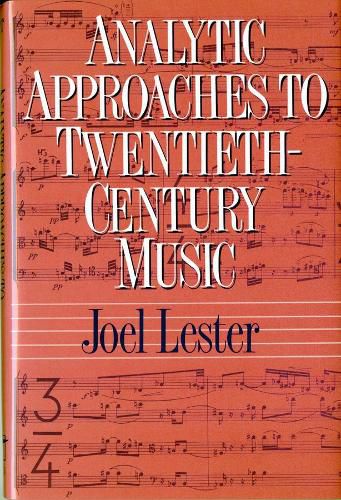Readings Newsletter
Become a Readings Member to make your shopping experience even easier.
Sign in or sign up for free!
You’re not far away from qualifying for FREE standard shipping within Australia
You’ve qualified for FREE standard shipping within Australia
The cart is loading…






Refreshingly free of jargon and the abstruse mathematical equations that characterize so many works of a speculative nature, this insightful study utilizes masterworks of twentieth-century music as the bases for discussion and analysis.
Analytic Approaches is organized into four units. The first focuses on aspects of musical structure other than pitch, such as rhythm, texture, timbre, form, and relationship of tonal music to the musics of our time. Units 2 and 3 deal with pitch structure: Unit 2 with pitch-class sets and Units 3 with serial music. Unit 4 contains a survey of music of the most recent generation.
The author admits freely that the perception of a work of art is a personal matter. In this book, he does not pretend to teach the way to listen to or to analyze contemporary music. Rather, he seeks to lead the reader to more informed listening through an understanding of how musical materials are used achieve both sonic and expressive effects.
$9.00 standard shipping within Australia
FREE standard shipping within Australia for orders over $100.00
Express & International shipping calculated at checkout
Refreshingly free of jargon and the abstruse mathematical equations that characterize so many works of a speculative nature, this insightful study utilizes masterworks of twentieth-century music as the bases for discussion and analysis.
Analytic Approaches is organized into four units. The first focuses on aspects of musical structure other than pitch, such as rhythm, texture, timbre, form, and relationship of tonal music to the musics of our time. Units 2 and 3 deal with pitch structure: Unit 2 with pitch-class sets and Units 3 with serial music. Unit 4 contains a survey of music of the most recent generation.
The author admits freely that the perception of a work of art is a personal matter. In this book, he does not pretend to teach the way to listen to or to analyze contemporary music. Rather, he seeks to lead the reader to more informed listening through an understanding of how musical materials are used achieve both sonic and expressive effects.